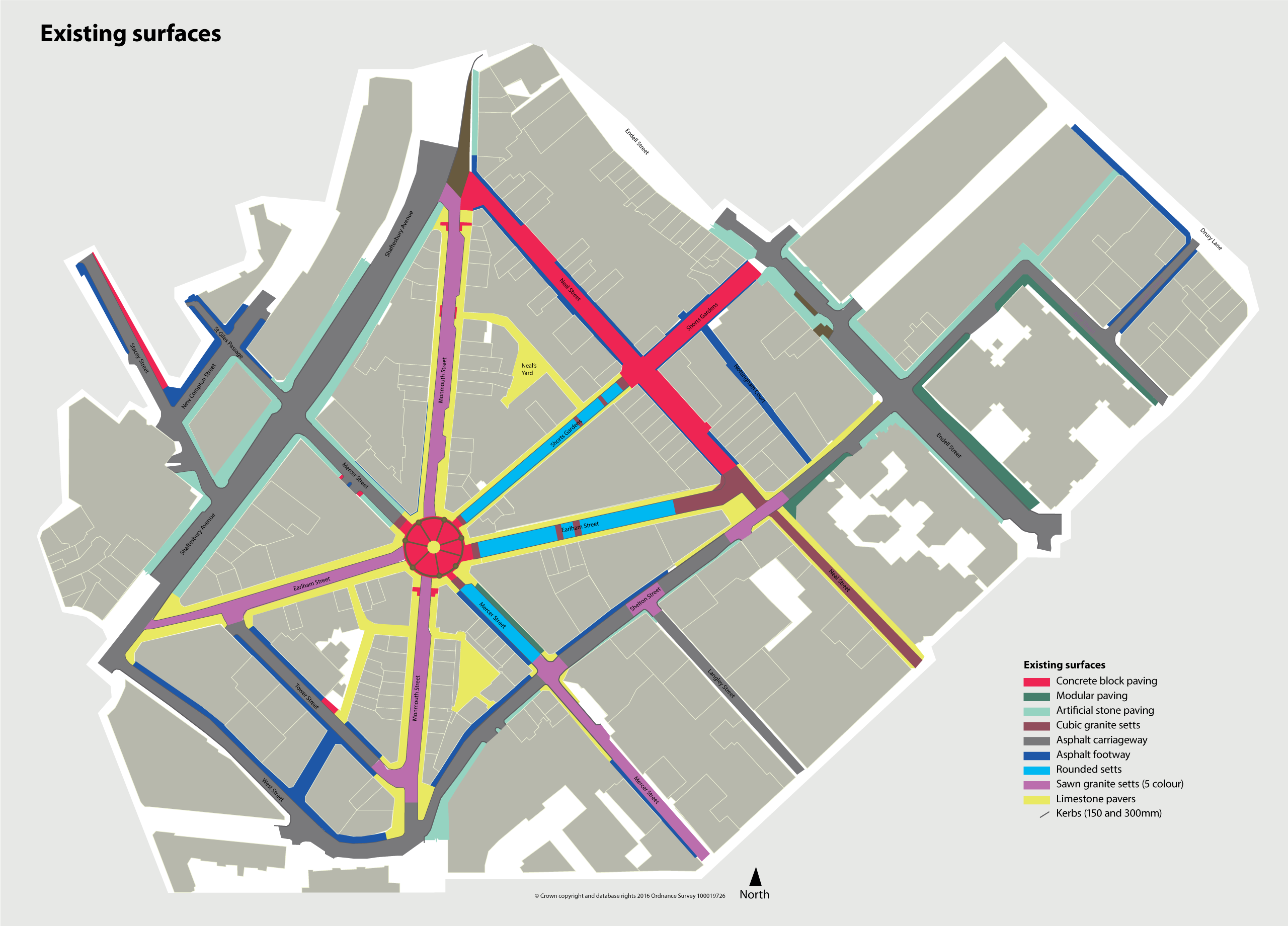The Study recommends that street surfaces in Seven Dials should be harmonised using traditional materials. Research has shown that streets in Seven Dials had more character when laid out uniformly in natural stone paving and cobbles on the carriageway, as they were from the 18th century until the First World War and beyond.
Carriageways presently have a mixture of surface finishes – an unsatisfactory legacy. Some are asphalt, but Earlham Street East and Mercer Street South have old granite setts which contribute particular texture and character. Two streets have modern setts, sawn and textured in a five-colour mix. Neal Street has utilitarian concrete pavers and that material is also used as inserts in the design that sets off the Sundial Pillar in the middle of the urban composition. The rest of The Dials’ concentric design is executed in small cubic granite setts and ‘York stone’ slabs of square proportion laid to fit the circular form.

The most characterful surfaces, namely rounded cobbles or traffic-worn setts, were procured at a time when there was less emphasis on the need and rights of people with disabilities. They are now more suited to areas where a tactile warning or deterrent texture is needed or people with mobility or sight problems have a viable, smooth, trip free alternative route. The loss of old setts is regrettable, and all stakeholders need to be aware of current legislative expectations. Flat setts are also quieter for the passage of traffic and better for cyclists and pedestrians.
Other high-quality surfaces, namely sawn and dressed setts (as in Monmouth Street, Earlham Street West and Mercer Street south of Shelton Street) can be used in places where rounded setts are identified as a problem. They
Two of the highest profile areas of carriageway, Neal Street and the Dials, are predominantly in concrete pavers of lesser quality. Part of Short’s Gardens shares the same surface treatment. These works were undertaken in 1984/5 by the Seven Dials Housing Action Area before the benefit of an overall strategy. These materials are below the standard expected in an outstanding conservation area and should be replaced with dressed, flat granite setts.